- ЕвропаАзияСредния Изток
- Шаблони за имейли
- Как да стартирате имейл (Съвети + шаблони)
Как да стартирате имейл (Съвети + шаблони)
Научете как да започнете професионален имейл с подходящи поздрави и фрази. Включени са съвети и шаблони за извинения и продажби. Регистрирайте се безплатно в LiveAgent за помощ в клиентското обслужване.

С над 300 милиарда имейли изпращани и получавани всеки ден, имейлът е съществено средство за комуникация. Да разбереш как да стартираш бизнес имейл по професионален начин – особено когато пишеш на някой, когото не познаваш – може да бъде предизвикателство както за специалистите по маркетинг, търговци, така и за представителките за обслужване на клиенти.
Всъщност, как започвате имейла си, може да направи разликата между вашия получател затваряне на имейла веднага (и изтриването му) или четене на. Следната статия предоставя няколко съвета как да започнете имейл заедно с някои от най-често срещаните имейл поздрави и имейл стартери, които можете да използвате във вашата бизнес кореспонденция.
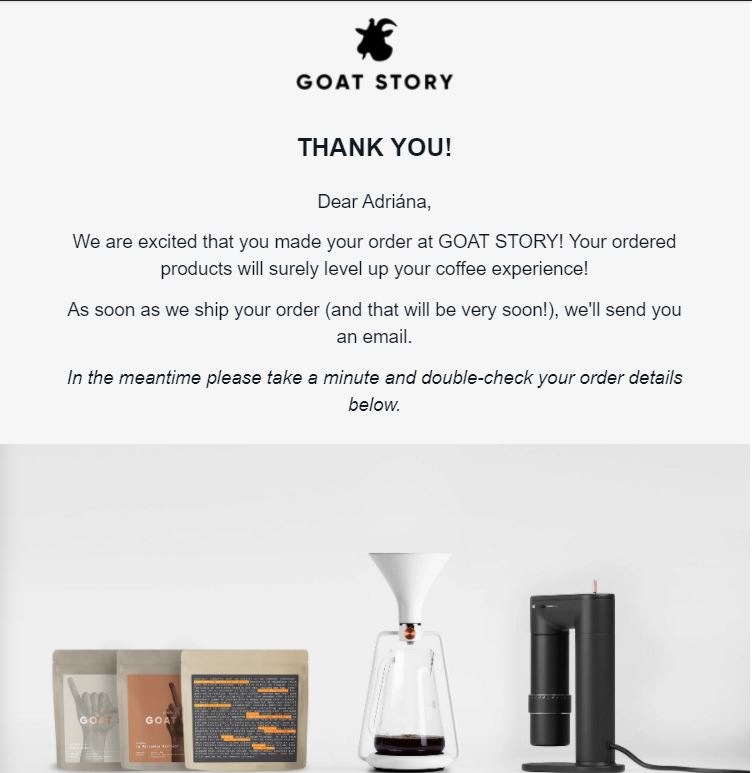
Какво да включите в началото на имейлите си
1. Поздрав или поздрав
Започнете с подходящ поздрав в зависимост от това колко формално трябва да бъдете. Винаги включвайте името на получателя (ако го знаете), за да направите поздрава по-личността. Не на последно място, проверете два пъти дали сте изписвали правилно името на получателя. Про бакшишът ни? Копирайте и поставете името им, както се вижда в предишните имейли, имейл подписи или уеб сайтове, за да сте сигурни, че няма да направите печатна бележка.
2. Въведение и основание за писане (ако е необходимо)
Когато пишете на някого за първи път, представете се и включете скъсено изречение за целта на имейла си. Това изречение може да определи дали получателят ще прочете имейла ви или ще го игнорира, така че се уверете, че целта ви е ясна и убедителна.
Ако имате общи приятели, колеги или познати, споменете ги, тъй като това може да увеличи шансовете ви за получаване на отговор. Например, бихте могли да направите фино име спад по следния начин: “Здравейте [Име], аз се натъкнах на нашия общ приятел Ричард (от [Компания]) през уикенда и той спомена, че имате нужда от нов инструмент за бюро за помощ, тъй като настоящият ви доставчик просто не го реже вече…”
3. Отваряща фраза/ добри пожелания (по избор)
Ако не сте писали на получателя дълго време или ако имате случайни отношения с получателя, би било подходящо да включите бърза, положителна бележка като “Надявам се, че се справяте добре”. Това може да зададе правилния тон за останалата част от имейла ви.
Като алтернатива, ако получателят е споделил някои актуализации на LinkedIn или други социални медии, не се колебайте да ги поздравите за последните им постижения (както лични, така и професионални). Бихте могли да кажете нещо като “Поздравления за промоцията ви” или “Поздравления, вълнуващо е да видите [Компанията на получателя] да придобие такъв важен клиент като [Company]”.“
4. A благодаря линия (по избор)
Въз основа на контекста можете да добавите кратка линия “благодаря” към вашата имейл кореспонденция. Ако например вашата перспектива/клиент се е свързала с Вас с запитване, “Благодаря ви, че протегнахте ръка” или “Благодаря ви, че се свързахте с [Компания]” е задължително задължително. Въпреки това, винаги, когато поставите в благодарствена бележка, важно е да я направите персонализирана, тъй като стандартните благодарствени бележки (като посочените по-горе) са малко твърде родови и могат да излязат като студени или standoffish.
Като просто добавите име преди вашата линия за благодарност, съобщението звучи по-топло и приканващо. Ето един пример: “Емили, благодаря ви много, че се свързахте с [Company] и за това, че повдигнахте този въпрос. Напълно си прав…”
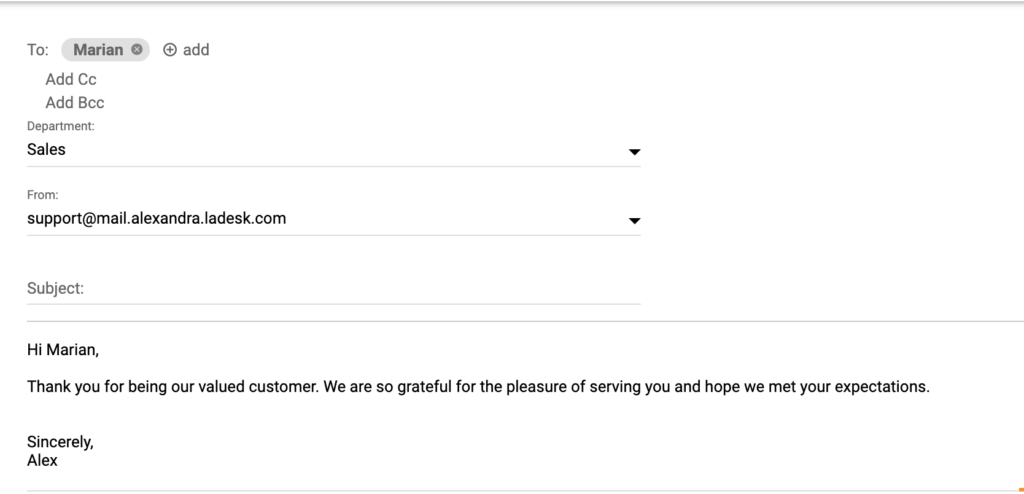
Примери и шаблони за стартиране на имейл
Професионални имейл поздрави
“Здравейте [Име]” е може би най-често срещаните и най-широко използваните имейл поздрав в света на бизнеса. Този поздрав обикновено се препоръчва за полуформални и неформални стилове за комуникация. Ако искате да бъдете малко по-формални, “Здравейте” може да бъде заменен с “Здравейте”.
“Уважаеми [Име]” също е подходящо както за формална, така и за неформална комуникация. За ваше удобство сме подготвили цял списък с други генерични поздрави, от които можете да избирате при стартиране на професионалния си имейл. Проверете ги:
Когато пишете на един или двама получатели:
- Уважаеми [Име],
- Уважаеми [Име] и [Име],
- Здравейте [Име],
- Здравейте [Име],
- [Име],
- Хей [Име],
При писане до трима или повече получатели:
- Здравейте всички,
- [Име на група или екип],
- Здравейте екип,
- Здравейте всички,
- Здрасти Добро,
- утро Добър,
- ден Добър,
- добър вечер
Когато не сте сигурни в името на получателя:
- Уважаеми сър,
- Скъпа госпожо,
- Здравей,
- Здравейте,
- Поздрави,
- Уважаеми мениджър по наемане,
- Уважаеми набиращ екип,
Общи изрази за отваряне на имейл
Следвайки поздрава, можете да включите кратко изречение за отваряне, за да стартирате имейла си. Най-добре е обаче да избягвате изречения като тези, ако пишете официален имейл или студен имейл с потенциален клиент, тъй като те могат да дойдат твърде приятелски. Ето някои от най-често срещаните примери за отварачи за имейли:
Hope this email finds you well.
I trust you are doing well.
How’s it going at [Company name]?
It’s great to hear from you.
I’m pleased to hear that…
I hope you enjoyed your weekend.
Hope you’re enjoying your holiday.
I hope you had a great trip.
I hope you’re doing well.
Hope you’re feeling great!
I hope you’re having a great week.
I hope you’re having a wonderful day.
I hope you enjoyed the event.
I hope you enjoyed your vacation.
I’m reaching out about…
I’m wanted to ask about…
I just wanted to send you a brief note about …
Congratulations on [recent accomplishment].
How did [recent project/ event] turn out?
I loved your recent [article/social media post].
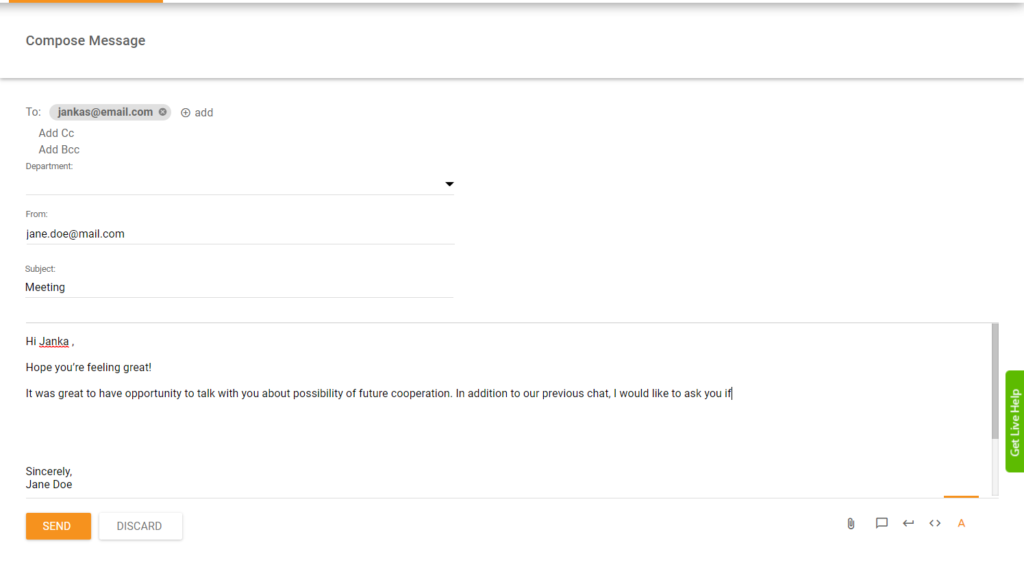
Проследяване на фразите за отваряне на имейл
Ако не сте сигурни какво да пишете в началото на последващия си имейл, обмислете включването на една от следните фрази за отваряне на имейл, които могат да счупят леда:
As we discussed in our phone call …
As we discussed at our meeting …
As promised, here’s …
I’m checking in on …
Just checking in to make sure that …
Following up on our meeting …
I am writing to follow up on…
I’m getting back to you about…
This is just a quick note to…
This is just a quick reminder…
I wanted to let you know that…
Can you please give me an update on …
I’m writing to remind you about…
It was great to meet you at [event].
It was great talking to you last week.
I’m glad we had a chance to chat at the [event].
It was a pleasure to meet you yesterday.
Отговор на имейл отваряне фрази
Когато отговаряте на клиент или перспектива, кратка линия “Благодаря” е подходяща в много случаи. Ако не сте сигурни как да включим “Благодаря” или се нуждаете от още малко вдъхновение разгледайте някои от нашите алтернативи:
Thanks for getting in touch.
Thank you for your message.
Thank you for letting me know.
Thank you for the update.
Thank you for the heads up.
Thanks for keeping me in the loop.
Thanks for the quick response.
Thank you for taking the time to [write to us/give us your feedback].
Thank you so much for getting back to me.
Thanks for getting back to me so quickly.
Thanks for your feedback on …
I’m sorry it took me so long to get back to you.
I apologize for the late response.
I’m sorry it’s been so long since my last email.
Sorry for my late reply.
Could you please clarify [something]?
Could you explain what you mean by [something]?
Could you give us some more details on…?
Как да стартирате имейл за студени продажби
Когато пишете студен имейл до перспектива, първият абзац ще определи дали перспективата ви ще намери съобщението ви, което си струва да се чете, така че е важно да впечатлите и откроите. Ето някои примери за това, което можете да включите във вашия уводен абзац:
“My name is [Name], and I am the marketing director for [Company]. [Mutual connection] recommended that I get in touch with you regarding …”
“My name is [Name], and I’ll keep this quick. I’m the founder of a software tool that helps businesses like yours achieve [specific goals] through [product benefits].”
“My name is [Name] and we work with companies like [Company 1], [Company 2], and [Company 3] to improve their [sales/ marketing efforts/ customer service, etc.].”
“[Name] from [Company] here. I saw you recently [visited our website/ downloaded a whitepaper, etc.]. I’ve worked with similar companies in [field/ industry] and I thought I’d reach out.”
“My name is [Name] and I’m with [Company]. We have recently launched a new solution that [what your solution does]. Based on your online profile [profile link], it appears that you might be the right person to talk about [problem solved by your product].”
Ако желаете да научите повече, разгледайте шаблоните за имейли за студени продажби.
Как да стартирате имейл за проследяване на продажби
Проследяването на перспектива, особено ако не са отговорили на предишното(ите) ви съобщение(и), може да бъде сложно. Ако е така, изпробвайте едно от тези ефективни изречения за отваряне на имейл– те може да са от полза!
“I trust that you have had an opportunity to read my previous email and look at our website, so I figured it’d be worth checking in with you again.”
“I sent you an email a while ago about [Company] and how I think we could be a great fit for you and [Company]. Did you know that our clients report [a **% increase] in [sales] when they use our [software/ platform/ tool]?”
“I hope I’m not overstepping, but I see that you have read my previous email and visited our site (the wonders of modern technology). I think this will be a good time for us to take the conversation further. What do you think? Are you available for a quick call on [date and time]?”
“I know how busy you must be managing your team and helping them increase [job function]. I sent you some information about [Product] a while ago and I thought this might be a good time to give you a practical demonstration.”
“I’m writing to follow up on my email as I didn’t hear back from anyone on the team. As I stated in my previous message, I believe [Product] can greatly improve how you do [what your product helps with].”
Ако желаете да научите повече, разгледайте шаблоните за имейл за последващи действия при продажби.
Design your own templates
LiveAgent gives you the power to design your own customer email templates, thus helping you to improve the customer service. Curious about all the opportunities?
Как да започнете след покупка / клиент добре дошли имейл
Винаги, когато някой купи вашия продукт или се регистрира за вашата услуга, трябва да му благодарите, или да го приветствате в “семейството”, за да гарантирате, че връзката ви започва чудесно. Най-добрият начин да направите това е чрез писане на имейл за добре дошли, който включва благодарствена бележка, кратко въведение и всяка полезна информация.
“Thank you for your recent purchase with us! I hope you’re enjoying your [product/ service].”
“Welcome to [Company]! We’re feeling pretty lucky that you chose us, and I just wanted to say thank you on behalf of our whole company.”
“I’m [Name], the founder of [Company] and I’d like to personally thank you for signing up for our service.”
“Welcome to [Product/ Company]. We’re thrilled to see you here! I’ll be your guide during this onboarding period, and my goal is to ensure you have a positive experience and get the most out of our [product/service].”
“Welcome to [Brand]! We’re excited to have you on board and we can’t wait for you to start using [product/ service] and seeing results.”
Чувствайте се свободни да проверите още шаблони за имейл след покупката и шаблони за имейли за добре дошли.
Как да стартирате имейл за обслужване на клиенти
Почти всеки имейл за обслужване на клиенти трябва да започне с бележка “Благодаря”, независимо дали отговаря на обикновено искане за обслужване на клиенти или отговаря на оплакване на клиент. Ето как може да изглежда:
“Thanks for reaching out! I’d be more than happy to help you.”
“Thank you for contacting [Company]. My name is [Name] and it would be my pleasure to assist you with …”
“Thank you for writing to us today. I’d be happy to answer those questions for you …”
“Thank you for your inquiry about […]. I’m really sorry to hear that you can’t […] I’m escalating your issue so that someone can take a closer look at what’s going on right away.…”
“Thank you for writing in. This message is to confirm that we’ve received your request, and will be in touch within ** hours with a complete response.”
Ако желаете да научите повече, разгледайте шаблоните за обслужване на клиенти.
Как да стартирате имейл за извинение на клиента
Когато отговаряте на ядосани или недоволни клиенти, не забравяйте да покажете съпричастност и да издадете извинение от името на бизнеса си. Ето как можете да го направите:
“Thanks so much for reaching out about order #[number]. I’m so sorry the product hasn’t worked out for you.”
“I’m so sorry that you had a negative experience with [product/ service/ company department]. I’ve looked into the issue, and it seems that [briefly explain the reason for their bad experience].”
“I am so sorry to hear that you have had such a poor experience with us. Although we strive for 100% customer satisfaction, it’s clear we’ve fallen short in this instance – and that’s unacceptable.”
“I am so sorry to hear that [a brief summary of their bad experience]. That should have never happened, and I completely understand how frustrating this must be for you.”
“Thank you for providing us this feedback. I realize how frustrating it must be to [details of the issue]. We obviously failed this time, and for that, we are very sorry.”
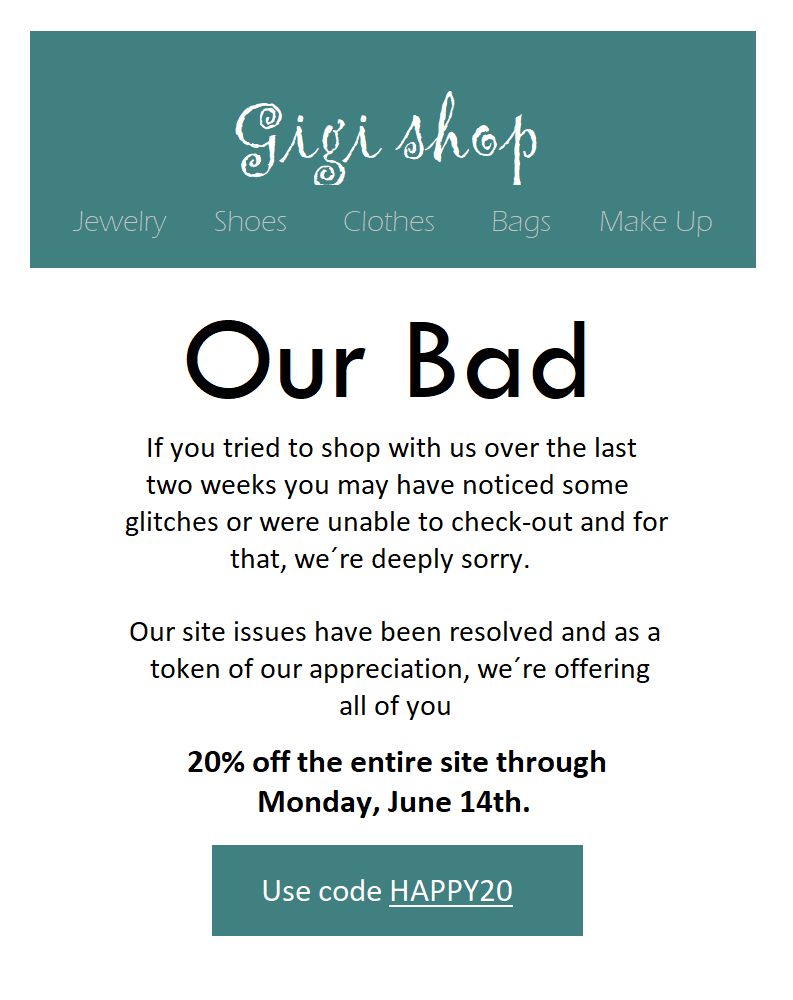

LiveAgent комбинира отличен лайв чат, запитвания и автоматизация, които ни позволяват да предложим изключително обслужване на нашите клиенти.
Гледайте как да пишете имейли на английски – официални, полуформални или неофициални

hi everybody and welcome back to english. for professionals i'm derek and i'm here. with another short lesson for you busy. people in this business english emails. lesson i'm going to show you the. differences between formal. semi-formal and informal emails. [Music]. before we get started if you need. english for work and you're interested. in short lessons to help you with your. business english then subscribe to my. channel now hit the red button and don't. forget to click on the little bell that. way you'll be notified every time i. upload a new lesson and now. let's get started. we're going to do three things in this. lesson. first of all we'll talk about the. different kinds of people we write. emails to and we'll categorize them into. formal semi-formal and informal after. that i'll show you example emails in. each style and at the end of the lesson. i'll show you lots of extra example. phrases in each style. let's start with formal emails we. usually use a formal style when we write. to new customers suppliers and business. partners and also to people who are in. higher positions managers bosses and. directors. we usually use a semi-formal style with. colleagues we know but not very well and. also with existing customers suppliers. and business partners. we use an informal style when we write. to friends and family and also to. colleagues or business partners we know. very well and work with on a regular. basis. the most common style to use in business. is the semi-formal style but of course. there are exceptions. for example it's quite possible that we. could use an informal style to write to. a customer or a supplier but only if we. know that person very well and if we. have a good and long relationship with. them and one more thing the style you. use also depends on the culture in your. company as well as the business culture. in the countries you work within so you. need to be aware of those factors. and now it's time to look at some. examples we'll start with the formal. style and the email we're going to look. at is a follow-up email after a formal. business meeting with a potential new. business partner. we start with a formal greeting dear. miss amir. first of all i would like to thank you. for the productive meeting on monday it. was lovely to meet you and learn more. about your business here we have formal. phrases like i would like to and it was. lovely to meet you. as discussed in the meeting i am sending. you the additional information about. that you requested i have attached a. document with all of the details and. here we have more examples of very. formal phrases as discussed in the. meeting. that you requested and so on if you. require any further information please. do not hesitate to contact me again a. typical formal style. i look forward to our next meeting on. january 10th. best regards derek callum. i look forward to and best regards our. typical phrases we use to close a formal. email. so there we have the formal style now. let's compare that one to a semi-formal. version of the same kind of email. in this case it's a follow-up email. after a less formal meeting with a. potential new business partner and as. you'll see in a moment we're already. using first names. dear nidra first of all i just wanted to. say thanks for the productive meeting on. monday it was great to meet you and find. out more about your business so here you. can already see a big difference first. of all first names so imagine that first. meeting was less formal and by the end. of the meeting we were using first names. also in that first line we don't have. the i would like to we have i just. wanted to say. and also rather than saying it was. lovely to meet you and learn more about. your business we have the less formal it. was great to meet you and find out more. about your business. i've attached a document with the extra. information about. that you asked for here we see more. examples of a less formal style instead. of i have attached we use the short form. i've attached we don't use words like. additional information or that you. requested we use less formal style extra. information. that you asked for. and now let's look at the last part of. the email please let me know if you need. any more information looking forward to. our next meeting on january 10th regards. derek so again much less formal. please let me know instead of the very. formal please do not hesitate to contact. me if you need any more information. instead of if you require any further. information and also in the closing part. looking forward to instead of i look. forward to. and then we have regards which is. slightly less formal than best regards. so there we can see the differences. between the very formal and the. semi-formal. and as i said before the semi-formal is. the one we use most often in business. correspondence but of course as i said. earlier it always depends on who you're. writing to company culture the business. culture those are things you need to be. aware of. now let's take a look at the comparison. between the semi-formal and the informal. style. this time we have another follow-up. email but it's after a very informal. meeting with a colleague you know very. well. hi tom just a quick mail to say thanks. for the meeting on monday and to send on. that extra info you asked for. see attachment. the first difference we can see here is. in the greeting hi tom hi is less formal. than. deer and then also in the start of that. first sentence just a quick mail to say. this is a typical way to start an. informal email. when you're giving someone information. and then we also have phrases like to. send on that extra info very informal. let's continue if you need anything else. just get in touch so again very formal. expression here just get in touch. see you at the next meeting cheers derek. so typical way to end an informal email. see you at the next meeting. cheers cheers can mean goodbye it can. also mean thank you this is just one. possibility if you want to see more ways. to end an informal email check out my. other lesson. 17 ways to end an email. now it's time for the last part of the. lesson where i show you more examples of. typical email phrases for formal. semi-formal and informal emails. let's start with friendly openings it's. often a good idea to use one of these. after you're greeting and before you say. why you are writing. i hope everything is going well. semi-formal. i hope all's well. and in the informal version. hope all's well or nothing we don't. always need to include a friendly. opening especially to people who we are. writing to on a daily basis or who we. write to. very often. and now an example for saying why you. are writing. i am writing to update you on. semi-formal i just wanted to update you. on. and in the informal version. just wanted to keep you in the loop on. keep you in the loop is a very informal. phrase which means to keep somebody. informed about the latest information. about something. requests. formal style. would it be possible too. semi-formal. is there any chance you can. and the informal can you. making arrangements. i was wondering if you would be. available for a meeting next. semi-formal would you be available for a. meeting next. and informal. can we meet next. confirming arrangements i would like to. confirm our meeting. just want to confirm our meeting. i'll be there. giving information i am afraid i will. not be able to. i'm afraid i won't be able to. and sorry but i won't make it to. and one more example closing line. referring to next contact. i look forward to hearing from you soon. looking forward to hearing from you soon. and. talk to you soon. so that brings us to the end of another. short lesson i hope you liked it and i. hope you found it helpful don't forget. to check out all of my other email. lessons here on youtube. i'll leave a link in the description if. you did like the lesson hit the like. button and share with your friends and. colleagues subscribe to my channel if. you haven't done that and don't forget. to join my email list every two weeks i. send out my free vocabulary email with. additional business english words in the. news and everyday english for you to. learn the link is also in the. description below thanks a lot for. watching and talk to you soon.
Резюме
Началото на бизнес имейла Ви (поздравът, линията на отваряне и първото изречение) е първото нещо, което получателят вижда, когато отвори имейла ви. Като стартирате имейла си по професионален начин, е по-вероятно да създадете положително впечатление върху тях. Поздравът, който използвате, и първите няколко изречения, които избирате за началото на професионалните си бизнес имейли, ще зависят от вашата аудитория и контекста на вашата комуникация. Използвайте имейл поздравите и изразите за отваряне на имейли, споменати по-горе, като подкани винаги, когато не сте сигурни как да стартирате следващия си имейл до клиент или студена перспектива.
Не забравяйте да проверите два пъти имейлите си за всякакви правописни или граматични грешки и се уверете, че винаги пишете името на получателя правилно. Последният ни съвет е да го пазим кратък и сладък, тъй като никой не иска да чете дълги имейли. Хвани се бързо с помощта на правилния тон на гласа, а ти си златен.
Master the art of starting emails with LiveAgent's how-to-start-an-email templates.
Our expertly crafted templates provide you with effective and attention-grabbing opening lines that will engage your recipients from the get-go.
Открийте всички функционалности на LiveAgent, водещ многоканален help desk софтуер, създаден да оптимизира управлението на тикети и клиентските запитвания. Автоматизирайте процесите, предотвратете сблъсъци между служители и подобрете клиентското обслужване с помощта на разнообразни функции като оценяване на служителите, управление на работно време и лесно прикачване на файлове. Разширете възможностите си с LiveAgent!
Landing PPC Archive - LiveAgent
Открийте LiveAgent - най-добрата многоканална платформа за клиентско обслужване с лайв чат, интеграции и гъвкави решения за всеки бизнес!"
You will be
in Good Hands!
Join our community of happy clients and provide excellent customer support with LiveAgent.

Сайтът ни използва бисквитки. Ако останете, приемаме, че сте съгласни да използваме бисквитки, както е описано в политиката за поверителност и бисквитки.
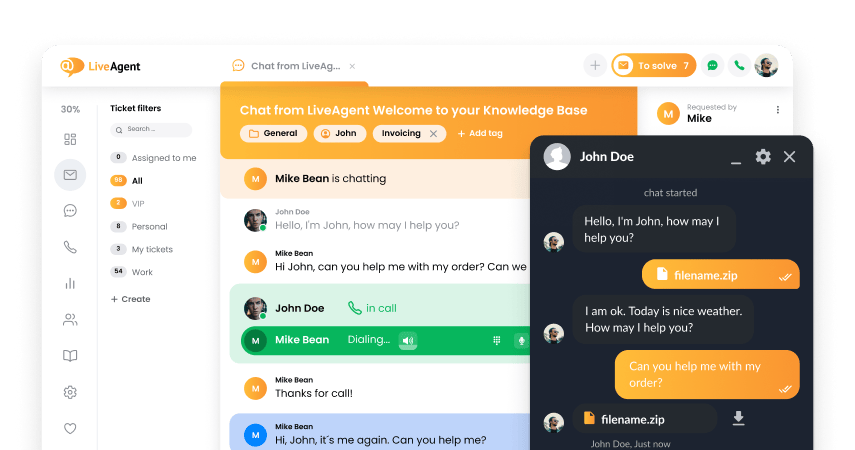
- How to achieve your business goals with LiveAgent
- Tour of the LiveAgent so you can get an idea of how it works
- Answers to any questions you may have about LiveAgent

 Čeština
Čeština  Dansk
Dansk  Deutsch
Deutsch  Eesti
Eesti  Español
Español  Français
Français  Ελληνικα
Ελληνικα  Hrvatski
Hrvatski  Italiano
Italiano  Latviešu
Latviešu  Lietuviškai
Lietuviškai  Magyar
Magyar  Nederlands
Nederlands  Norsk bokmål
Norsk bokmål  Polski
Polski  Română
Română  Русский
Русский  Slovenčina
Slovenčina  Slovenščina
Slovenščina  简体中文
简体中文  Tagalog
Tagalog  Tiếng Việt
Tiếng Việt  العربية
العربية  English
English  Português
Português 





